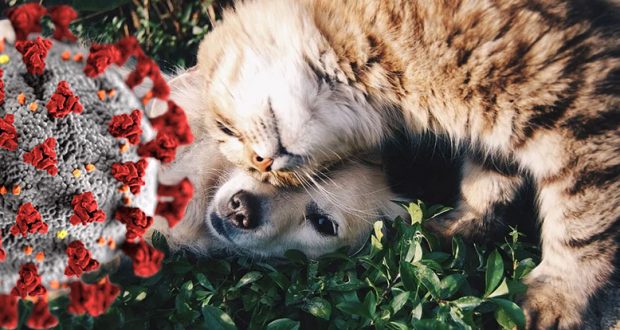Sharing is Caring: COVID-19 and Animals
February 3, 2022
Since the outbreak of the SARS-CoV-2 virus in early 2020, which was first detected in China in December of 2019, the virus has quickly spread around the whole world, affecting people of all ages. What some may not know is that it’s also affecting animals.
According to a study conducted by the World Health Organization (WHO), the virus probably originated in bats and spread to humans through an intermediate animal. Recently, scientists and researchers have detected this virus in more species of animals: companion animals (dogs and cats), zoo-animals (several types of big cats, otters, non-human primates, a binturong, a coatimundi, a fishing cat, and hyenas), white-tailed deer in several states in America, and minks (a semi-aquatic, carnivorous species belonging to the weasel family) on mink farms. According to the Centers for Disease Control and Prevention (CDC), “the virus spreads from people to animals during close contact,” but the risk of animals spreading the virus to humans is low.
But, how are scientists able to tell that an animal has contracted COVID-19? Well, many animals suffering from COVID experience symptoms similar to those exhibited by humans: fevers, coughing, difficulty breathing, fatigue, sneezing, runny nose, vomiting, and more. While we think that a dog might experience COVID in a completely different, or even less severe, way, animals go through symptoms that can be extremely uncomfortable and, while not extremely contagious, still life-threatening. A study managed by the CDC discovered that symptoms, in all animal research candidates, can range from fatigue to chest pains and troubled breathing.
Not only can animals contract the virus, but they also play an important role in the testing of the COVID-19 vaccine. Vaccine testing on humans can often be risky, especially without knowing the effects of more recently developed vaccines. This is where animals come into play. Animals are tested to see if the vaccine stimulates responses that are safe and whether the vaccines work at all. Mice and hamsters are a couple of the most common candidates for these tests, because of their rate of reproduction as well as their ability to emulate how the diseases in a vaccine present themselves in humans. Although the topic of animal experimentation is controversial, with many arguing that supporting animal cruelty for the purpose of research should be banned, it has also helped advance the information we have on the Covid vaccine. Research done by the National Institution of Allergy and Infectious Diseases (NIAID) shows that, due to the vital information gained through COVID-19 vaccine testing in animals, more animal testing will most likely lead to significant breakthroughs in the journey of ending the pandemic.
Overall, the recent finding of COVID being transmissible to animals and symptoms they face being similar to those of humans helps scientists further understand the origins and impacts of the virus on humans and the vaccine on the virus. So, when thinking about the people suffering from the pandemic, don’t forget to pray for our furry friends, too.


















































































































































